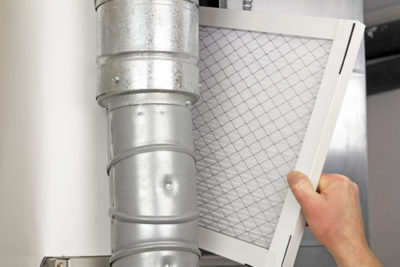“Abe's Heating and cooling were professional and on time. they helped me with two time sensitive projects and did excellent work. I know who I'll be calling if I should ever need an HVAC technician.”
Blog
 Did you know that the air quality in your home is greatly affected by the furnace air filters you use, as well as by how often you replace them? Air pollutants rank in the top five health risks, and can actually be prevalent inside your home. Because today’s homes are so well sealed against the elements, without sufficient fresh air circulation, toxins and irritants that come in do not easily find their way back out. Mold and mildew, dust and dirt, pet dander and household chemicals can cause itchy eyes, scratchy throats and headaches. They can also exacerbate asthma and other respiratory problems.
Did you know that the air quality in your home is greatly affected by the furnace air filters you use, as well as by how often you replace them? Air pollutants rank in the top five health risks, and can actually be prevalent inside your home. Because today’s homes are so well sealed against the elements, without sufficient fresh air circulation, toxins and irritants that come in do not easily find their way back out. Mold and mildew, dust and dirt, pet dander and household chemicals can cause itchy eyes, scratchy throats and headaches. They can also exacerbate asthma and other respiratory problems.
Flat-paneled Fiberglass Air Filters
The least expensive option, these disposable filters are made of layered fiberglass fibers reinforced with a metal-like grating. Designed to keep your HVAC system clean, they do not do a much to improve air quality. They have a medium-efficiency rating (1-4) for capturing airborne pollutants and a low-efficiency rating for filtering dust, dander, bacteria and viruses. They are very thin and have a simple, flat panel surface to trap air particles.
Pleated Media Filter
The pleats create greater surface area for trapping small to large particles, so these filters do a slightly better job at keeping irritants and allergens out of your home. Pleated filters with a rating of 5-13, remove up to 45 percent of airborne pollutants. Those with a rating of 7-13 are comparable to high-efficiency particulate air (HEPA) filters but are available at a lower price point.
HEPA Filters
OSHA (Occupational Safety and Health Administration) ranks HEPA filters as the best for eliminating airborne particles. Rated 17-20, these filters remove up to 98% of air pollutants from a home. Unfortunately, these filters are not compatible with most residential HVAC systems because as well as blocking particulates, they also block more airflow. If you require this level of air cleaning, an HVAC professional can retrofit your furnace to accommodate HEPA filtration.
We recommend staying away from the cheap furnace filters and investing in a high-efficiency air filter with a MERV rating of at least 8 or higher.
Contact ABE Heating and Cooling today for all your furnace needs. We are located in Brighton, Colorado, and serve the entire Denver Metro Area.